A 4 point lighting system at a low angle of incidence reduces glare and provides even illumination. While most works look great in this lighting, some artwork shows glare at every angle of incidence. These works benefit from polarization. Here are some samples showing the unpolarized version on the left and the polarized version on the right. Please click on these and view them at 1:1 to fully appreciate the differences.
Here’s what a cotton rag matte surface paper looks like under a microscope with and without polarization:
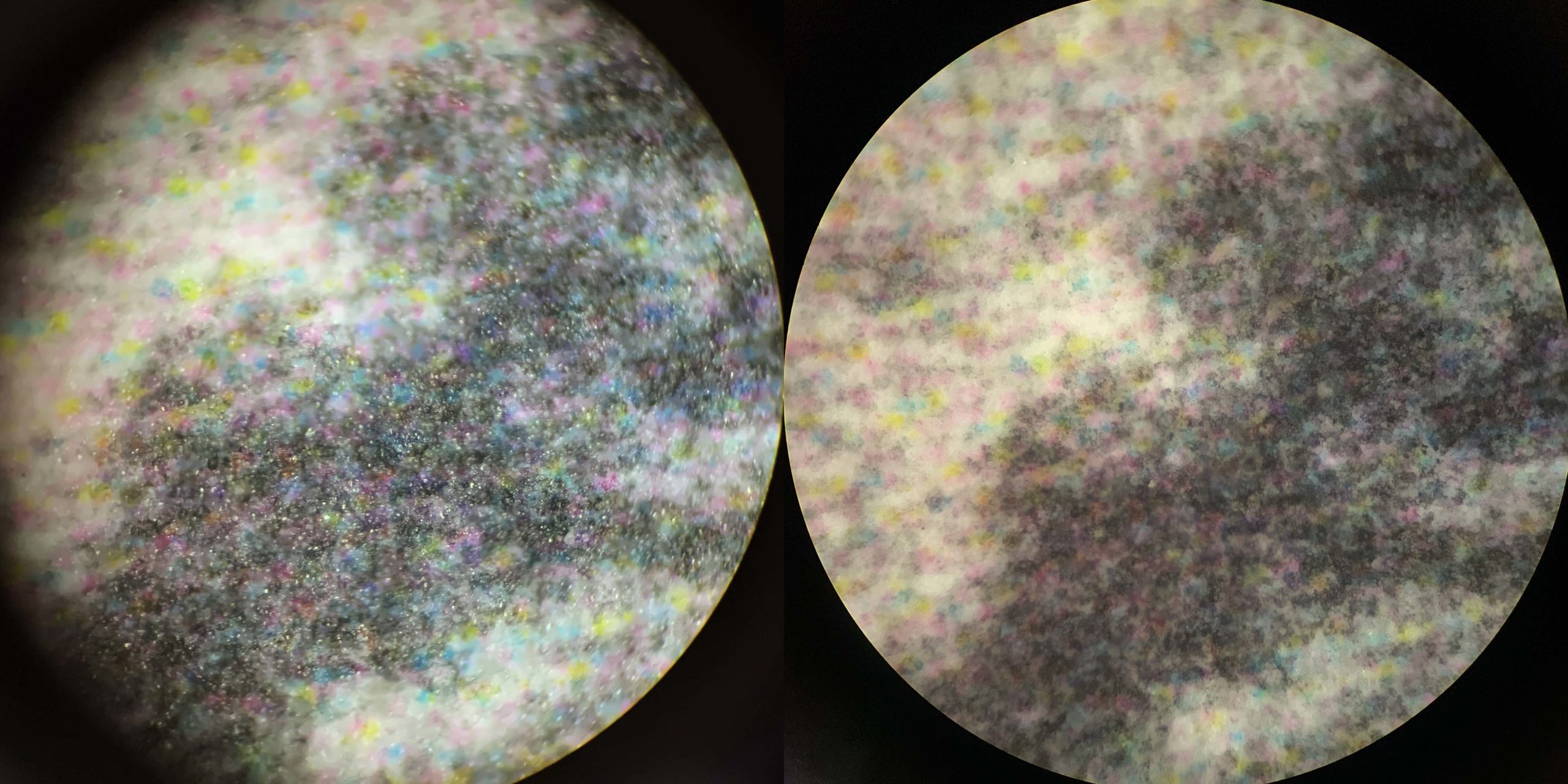
See all those specular highlights on each cotton fiber? That’s the glare that makes unpolarized captures look lighter than they should. The polarized capture isn’t “darker” it just shows us the true nature of the pigments without glare or specular highlights.
From our experience, polarization is absolutely necessary for art documentation along with a calibration technique for it that ensures precise tonal reproduction. Because content like naked wood and metallic paints must be documented without polarization (or even better, with minimal polarization) we recommend documenting artwork both with full polarization and with minimal polarization. The differences can be informative and , in our option, both are superior than those made with no polarization.

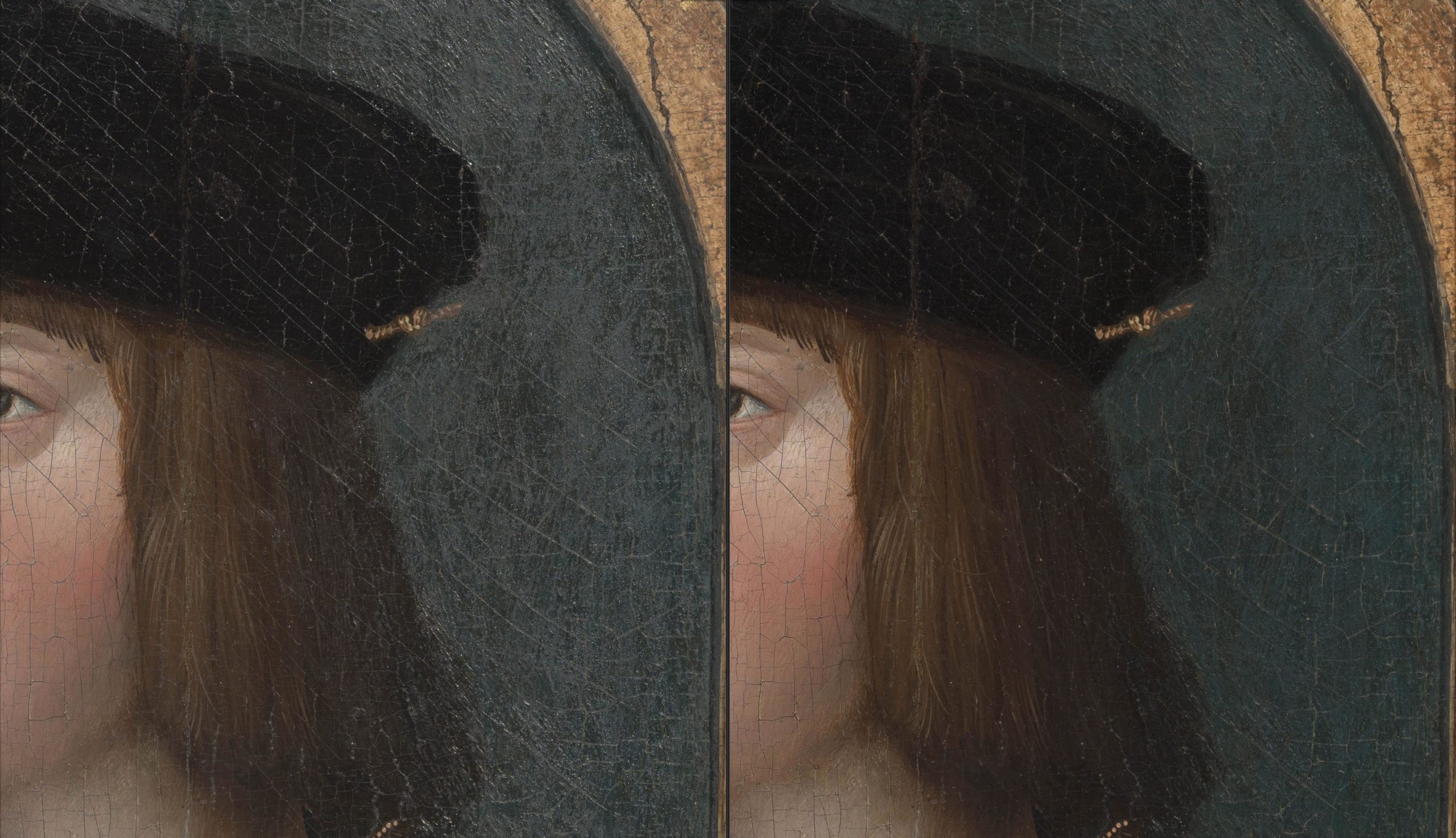
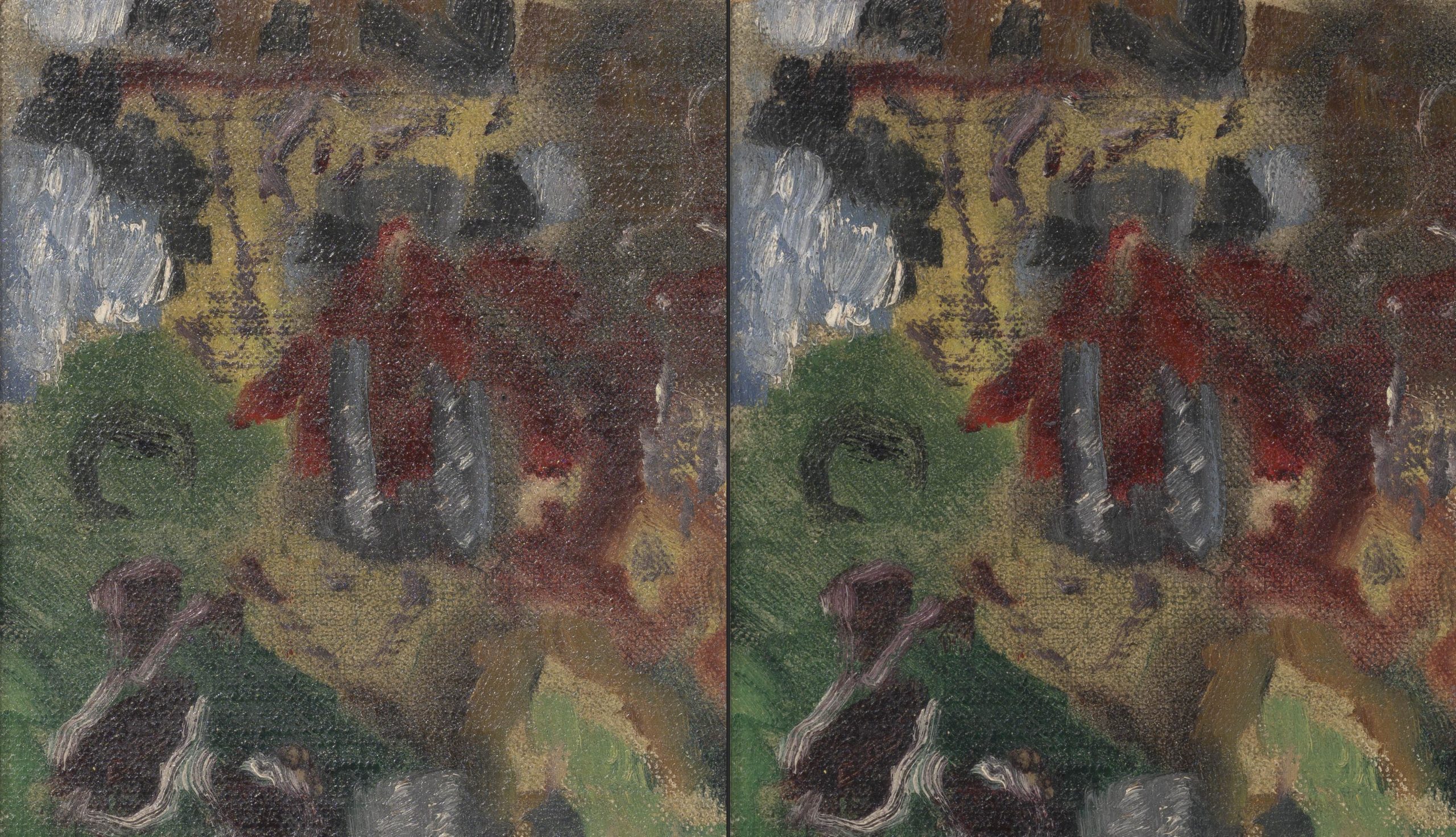
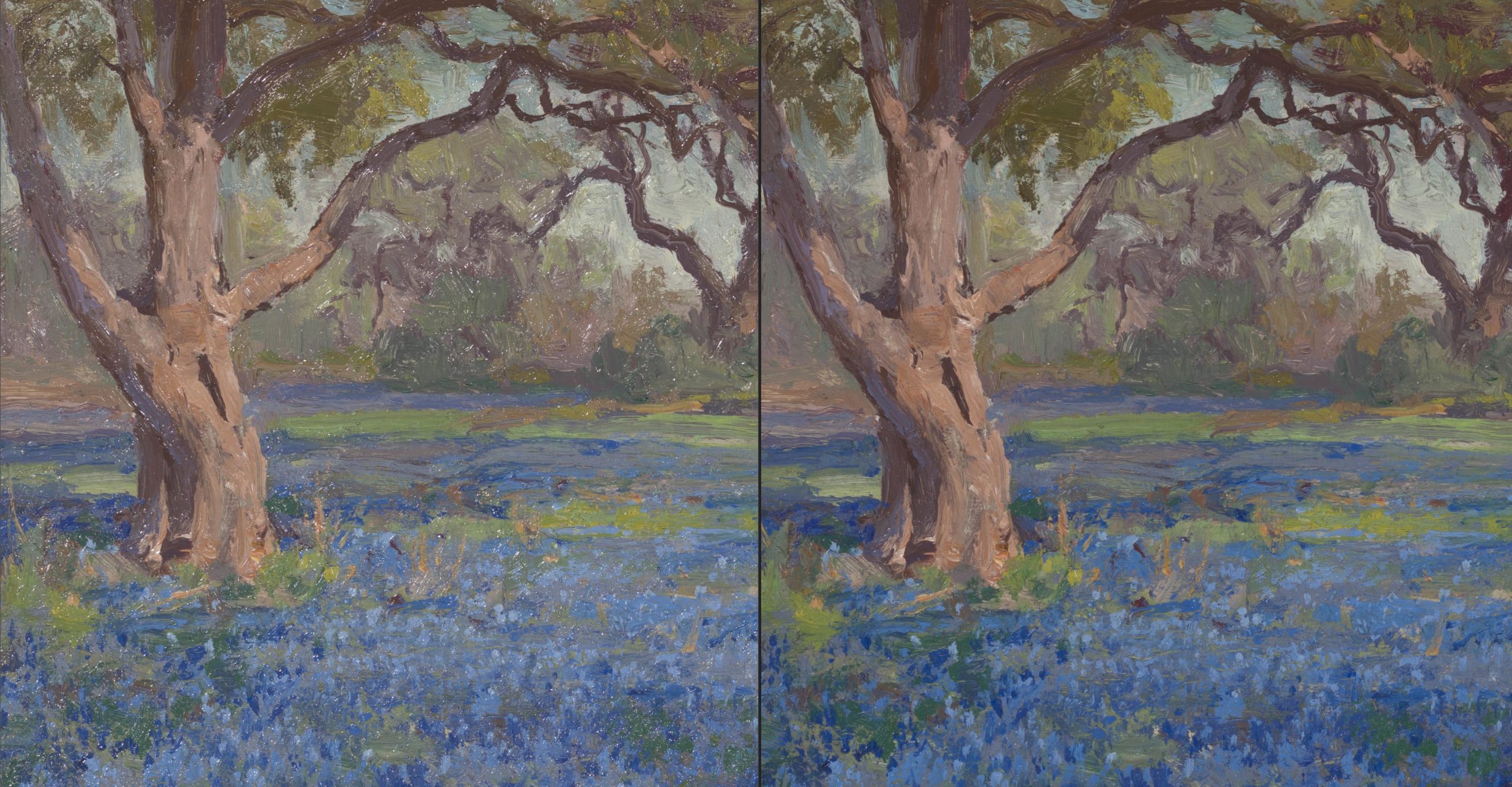
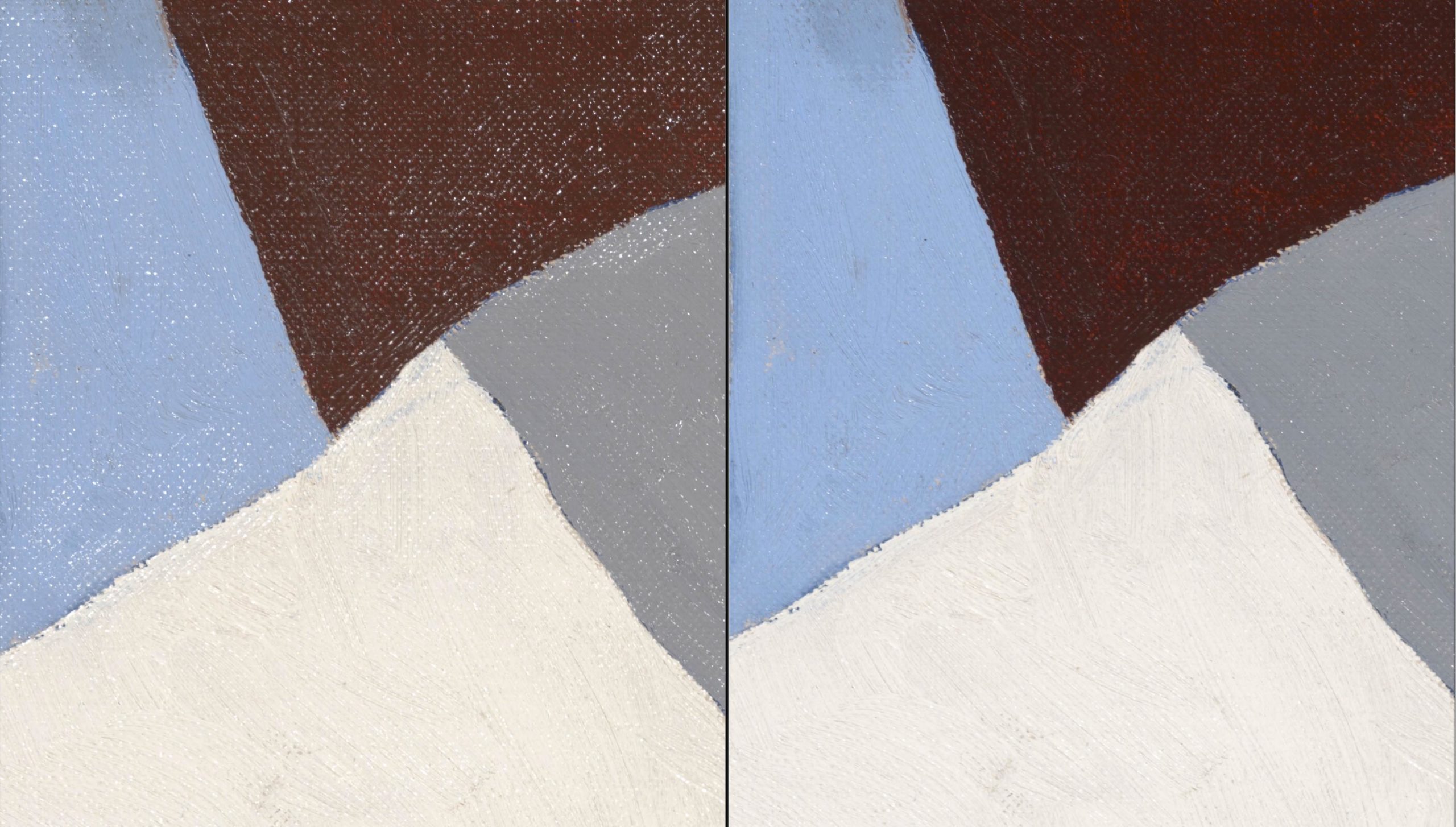
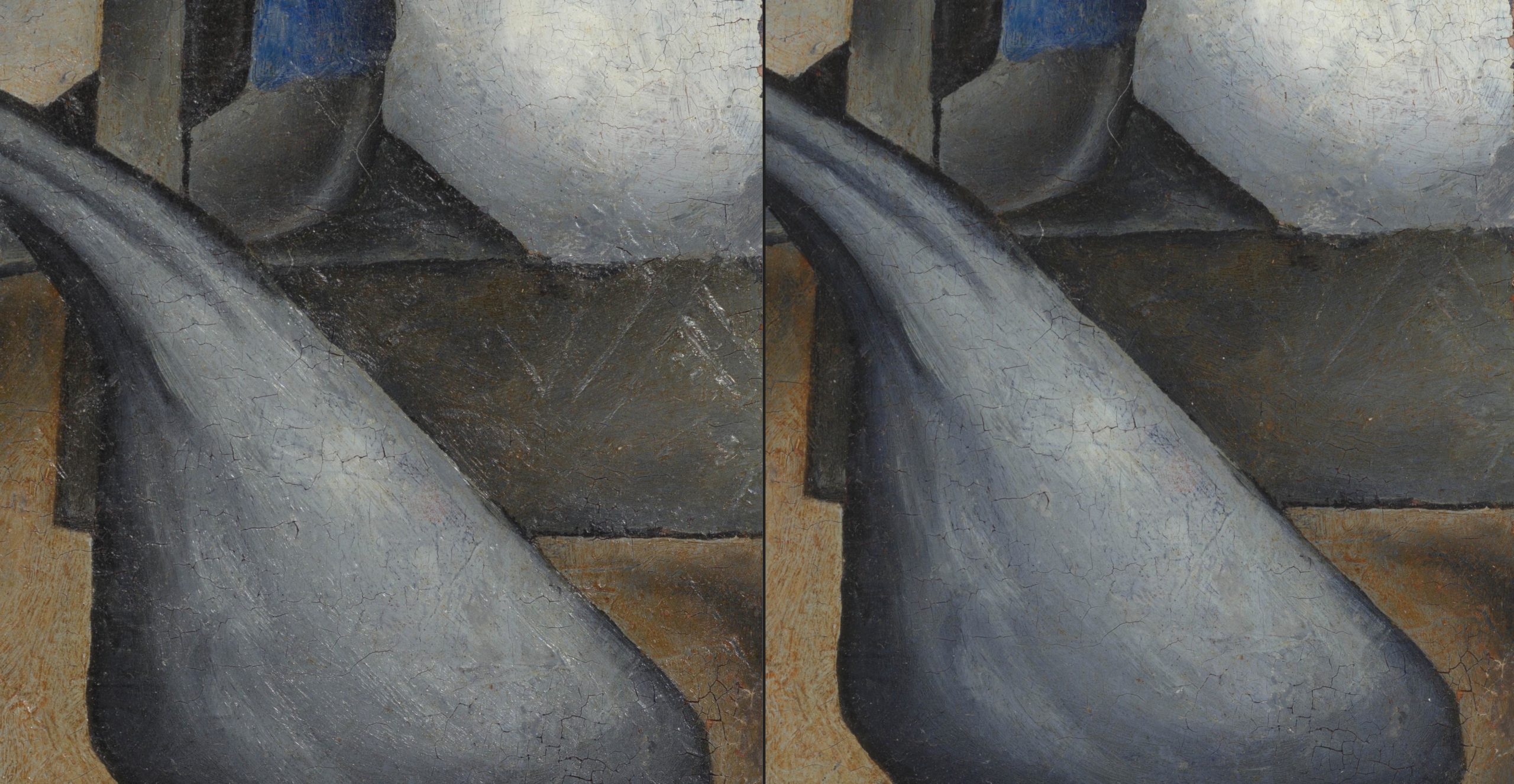
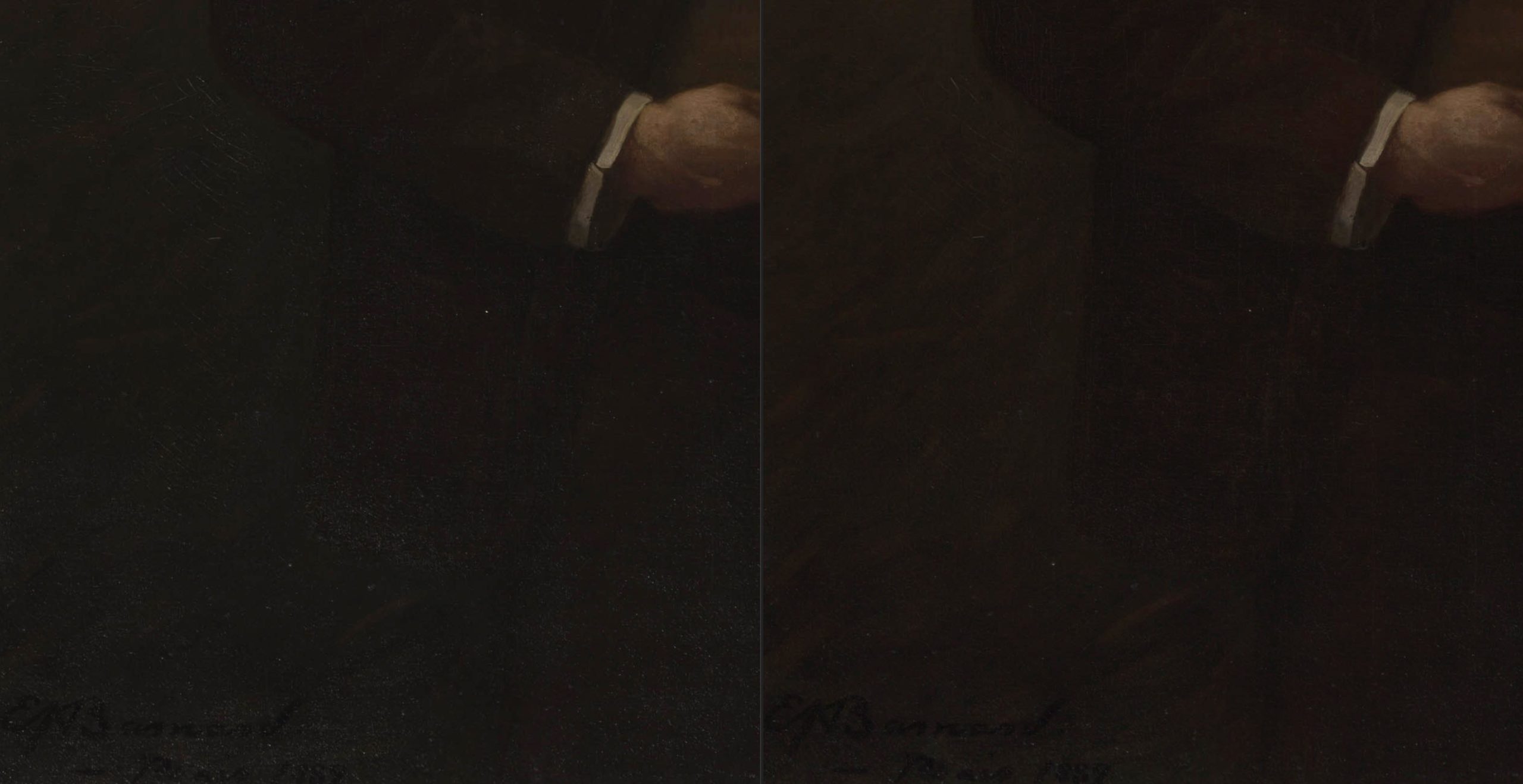
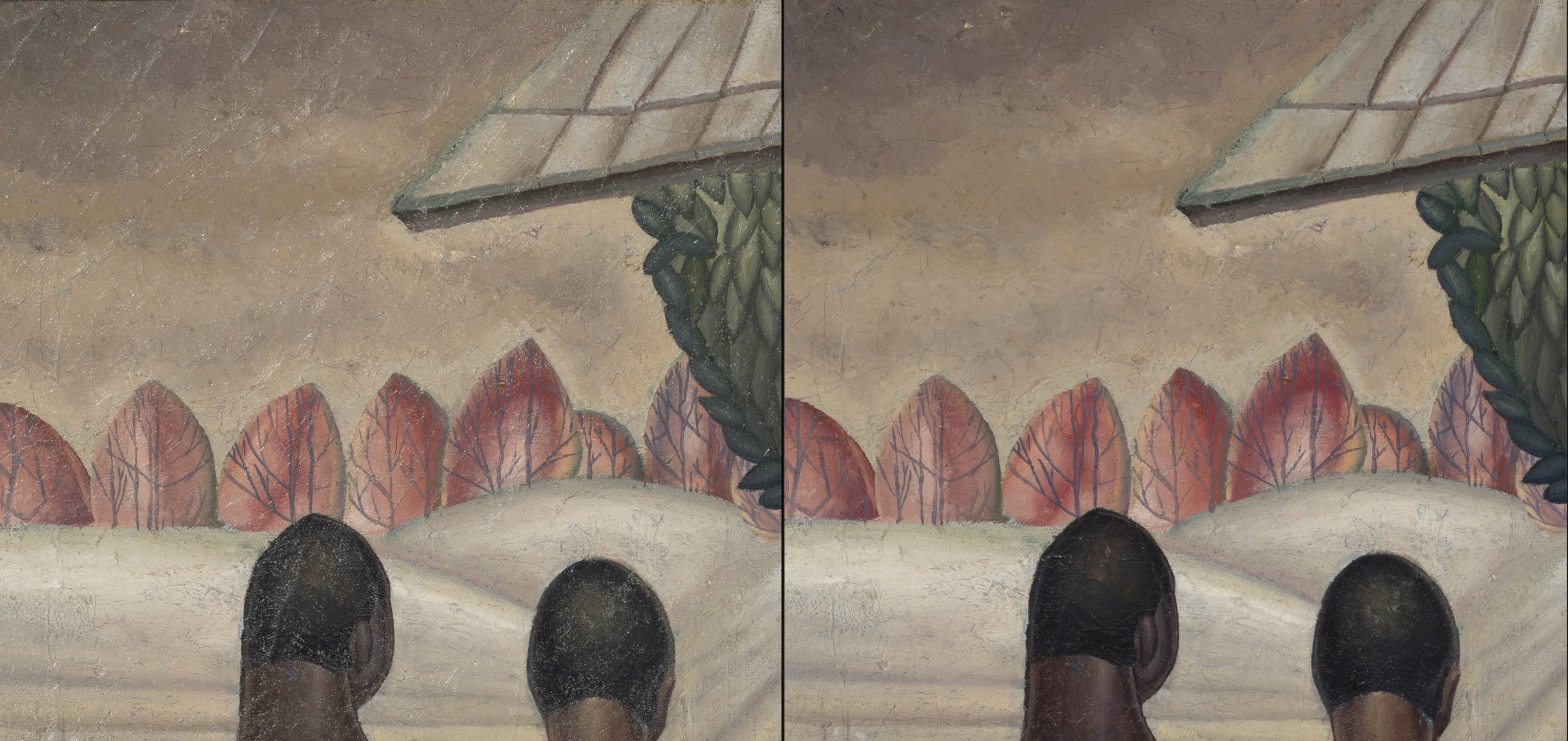
Brilliant! I definitely began to pay closer attention to highlights when shooting 2D. The depth of color feels unexpected and rich at the same time. Though I would like to know what your opinion is for showing texture. I noticed the highlights bring out the grain of the canvas at the expense of color depth. What would you do to compromise the texture and color?
Hi Nora and thanks for your comments. I choose to use a 4 point lighting system placed at 38.6° as a universal standard for documenting everything consistantly. Now, there are circumstances that call for customized lighting to accentuate texture (scrape lighting from one side for example), and circumstances that call for recording texture (Metis scanner or photogrametry), but the 4 point system is an excellent method for 2D documentation that shows texture without exaggerating it. It’s also worth mentioning that I shoot everything at Pol90 and Pol45 (full and minimal polarization) and record and deliver both files. They can be quite a conversation starter but some clients have requested that I exclude the unpolarized versions except where naked wood and metallics are present.
Also, by “highlights” I think you mean to say “spectral highlights” – the white spots we see without polarization. IMO, spectral highlights (and any type of glare) only cloud our perception of the actual artwork. Eliminating them allows us to better see the actual paint and what the artist had intended.
Hi Scott,
Great examples! Can you expand a bit on your polrarizing technique? Are you using polarization on the lights as well as the lens? Is the lens polarizer linear or circular? What angle do you find most effective for the lights?
Thanks for sharing these images.
Best Regards,
Tim
Thanks Tim! Yes, I use a 4 point lighting system with polarizing film on the lights and a circular polarizer on the lens. I use polarization indicators to align each of the 4 light polarizers and when set to full cross polarization, I like to refer to this as “Pol90” meaning the polarizers are at 90° to each other and we are achieving the full polarization effect. “Pol33” is same as no polarization and Pol0 is quite ugly – meaning “reverse polarization” with all the light you don’t want and none of the light you do want. I’ve found that Pol45 is a slight amount of polarization that’s similar to but better than no polarization in all circumstances – metallics looks even more natural and controlled and don’t bloom like they do without polarization. I shoot everything at both Pol45 and Pol90 and label the files accordingly. Can be a fun conversation starter with curators.
Comment! Please. I dare you. :-]